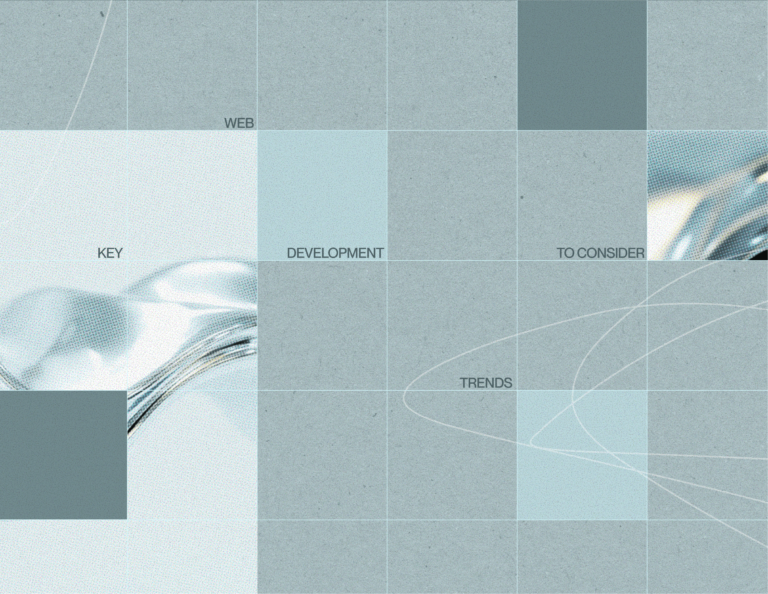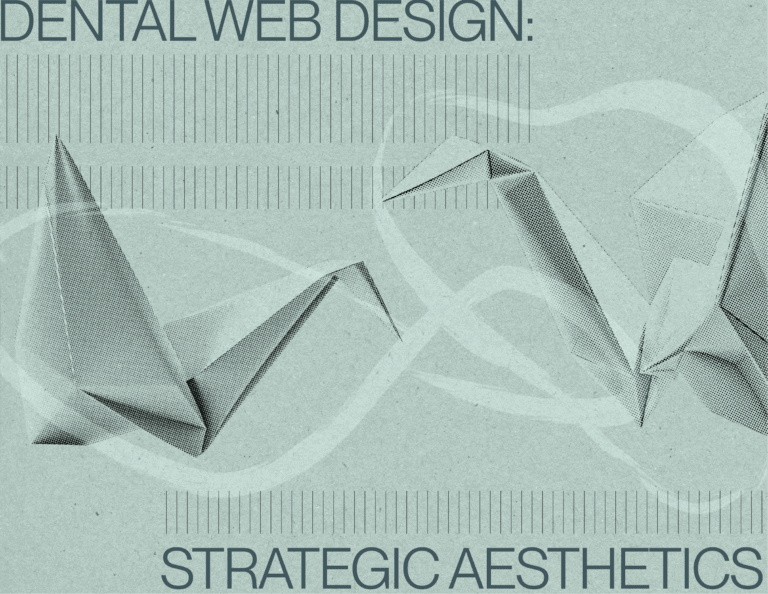Outline:
A successful restaurant website is a powerful tool that reflects your brand, engages customers, and drives revenue. Every detail, from visuals to functionality, should be purpose-driven and resonate with your audience. Collaborating with a professional restaurant website design company ensures your site captures the essence of your brand while meeting operational and aesthetic goals.
Whether you’re running a bustling quick-service restaurant, a cozy casual dining spot, or an upscale fine dining establishment, your website is frequently the first interaction a potential customer has with your brand. It needs to make a strong impression. By aligning your website with your business model, you can create an experience that attracts new customers and keeps existing ones coming back.
The Foundation: A Business Model Example for Food
Every successful restaurant starts with a clear business model—a blueprint that defines how it creates, delivers, and captures value. In the food industry, this goes beyond simply serving meals. It includes understanding your target audience, defining your unique offerings, and identifying the revenue streams that will sustain your business. In any case, your business model is the backbone of your success. Here’s a closer look at key business model examples in the food industry:
Quick-Service Restaurants
Quick-service restaurants are built on efficiency and affordability. These establishments aim to serve as many customers as possible in a short amount of time while maintaining consistent quality.
- Target Audience: Time-pressed individuals, commuters, and budget-conscious customers looking for a fast, satisfying meal.
- Menu Strategy: QSR menus are often concise, focusing on popular items that can be prepared quickly and consistently. Limited-time offers or combo deals keep customers engaged and encourage repeat visits.
- Revenue Streams: High-volume, low-margin sales are the cornerstone of this model. Additional revenue can come from upselling sides, beverages, or desserts.
Casual Dining
Casual dining strikes a balance between affordability and ambiance, offering a relaxed experience that appeals to a broad audience. These establishments often serve as go-to spots for families, social gatherings, or casual work lunches.
- Target Audience: Families, friends, and casual diners looking for comfort, variety, and value.
- Menu Strategy: These restaurants typically feature an extensive menu with options ranging from appetizers to desserts, catering to diverse tastes and dietary preferences. Seasonal specials or themed menus can add excitement and variety.
- Revenue Streams: Moderate pricing allows for wider margins, supported by beverages, desserts, and occasional upselling of premium menu items like signature dishes or curated drinks.
Fine Dining
Fine dining is all about luxury, exclusivity, and an elevated culinary experience. This business model focuses on creating unforgettable moments for customers who value quality and artistry over cost.
- Target Audience: High-income customers, food connoisseurs, and special-occasion diners seeking an exceptional dining experience.
- Menu Strategy: Fine dining menus often feature sophisticated, seasonal dishes crafted with premium ingredients. Prix fixe menus or tasting menus allow chefs to showcase their creativity and expertise.
- Revenue Streams: Higher profit margins come from premium pricing on dishes, curated wine pairings, and exclusive offerings like private dining or chef-led experiences.
Specialty or Niche Concepts
Specialty restaurants focus on unique offerings that cater to specific customer needs or interests, such as plant-based cuisine, fusion dishes, or cultural authenticity.
- Target Audience: Niche markets, food enthusiasts, and customers with specific dietary preferences or cultural connections.
- Menu Strategy: Menus in specialty restaurants emphasize authenticity and creativity. For example, a vegan restaurant might offer innovative takes on comfort food, while a farm-to-table establishment highlights seasonal, locally sourced ingredients.
- Revenue Streams: Premium pricing based on the perceived value of exclusivity, sustainability, or authenticity. Specialty merchandise, cooking classes, or meal kits can also supplement revenue.
A well-defined business model serves as the foundation for every decision you make, from menu design to marketing strategies. That’s why, with your well-defined business model, you can speak out your value proposition clearly and set the stage for long-term success.
Turning Brand Identity into a Visual Feast
Your website is often your restaurant’s first impression, and in an increasingly digital-first world, it must go beyond information to capture your essence. It should evoke emotion, reflect your brand’s personality, and tell your story authentically. From colors to fonts to imagery, every design choice should work together to create a memorable connection with your audience.
01 Color Palettes That Set the Mood
Colors have a powerful psychological impact and are among the first things visitors notice when they land on your site. They evoke emotions, convey your restaurant’s tone, and subtly guide user behavior. Selecting the right color palette is crucial to ensuring your website resonates with your target audience:
Bright Reds and Yellows
These energetic, appetite-stimulating colors are ideal for quick-service restaurants. Red creates a sense of urgency and excitement, while yellow adds warmth and cheerfulness—perfect for grabbing attention and encouraging fast decision-making.
Earthy Tones and Greens
Ideal for farm-to-table or organic restaurants, earthy hues like olive green, terracotta, and warm beige create a sense of sustainability and freshness. These colors evoke trust and communicate a connection to nature.
Black, Gold, and White
Exuding elegance and sophistication, this combination is the hallmark of fine dining establishments. Black conveys exclusivity and power, gold adds a touch of luxury, and white enhances the feeling of cleanliness and purity.
02 Fonts That Echo Your Brand’s Voice
Typography is a storytelling tool that reinforces your brand’s voice. The right font choice can evoke feelings of warmth, sophistication, or modernity, depending on your audience and concept.
Bold and Playful Fonts
These work well for family-friendly or fast-casual restaurants. Rounded or whimsical fonts add a sense of fun and approachability, making your website feel welcoming to all age groups. Pair these with bright colors for a vibrant, cheerful look.
Elegant Serif Fonts
A serif font—characterized by its small decorative strokes—exudes refinement and tradition. Perfect for fine dining establishments, these fonts resonate with customers seeking a premium, high-end experience. Pair serif fonts with muted tones and minimalistic website layouts to amplify the effect.
Clean, Modern Sans-Serif Fonts
Minimalist and easy to read, sans-serif fonts are ideal for trendy or niche concepts. They communicate simplicity, innovation, and approachability, making them perfect for tech-savvy or health-conscious audiences.
03 High-Quality Visuals
In the restaurant industry, visuals aren’t just nice to have—they’re essential. People eat with their eyes first, and the imagery on your website can make or break a potential customer’s decision to visit. Investing in high-quality photography and videography ensures your website communicates the quality, care, and atmosphere your restaurant offers.
Dishes That Shine
Professional photos should highlight the colors, textures, and plating of your most popular dishes. A close-up shot of a steaming pasta dish or a perfectly crafted dessert can evoke cravings instantly.
Showcasing Ambiance
Capture the unique vibe of your restaurant, whether it’s a cozy café with soft lighting or a bustling diner with retro decor. These images give customers a sense of what to expect and help them picture themselves enjoying the space.
Behind-the-Scenes Content
Videos of chefs preparing meals, bartenders crafting cocktails, or the restaurant in action during a busy evening add authenticity and a human touch. They create a sense of trust and deepen engagement.
Combining these elements ensures your website doesn’t just inform but captivates. A well-designed restaurant website is a feast for the eyes, offering an immersive experience that leaves a lasting impression. Thus, you can transform your website into a digital extension of your restaurant that entices visitors to take the next step, whether that’s booking a reservation, placing an online order, or simply sharing your site with friends.
Let’s get started!

Functional Features: Meeting Expectations with Purpose
Your restaurant’s website is a virtual extension of your day-to-day operations. To truly support your business, its functionality must mirror the unique demands of your restaurant’s business model. A thoughtfully designed website bridges the gap between customer expectations and operational excellence. Let’s explore how tailored features can transform your digital presence into a powerful tool for success.
Quick-Service Restaurants
For quick-service restaurants, the focus is on convenience, speed, and accessibility. Customers visiting QSR websites are typically looking for efficiency in ordering and accessing information.
Online Ordering Systems
- Implement a fast and intuitive online ordering system that simplifies the process of menu browsing, order customization, and payment.
- Features like saved orders, order tracking, and one-click reordering are invaluable for retaining repeat customers.
- Include real-time updates for order statuses, such as “In Progress” or “Ready for Pickup.”
Mobile Optimization
- With over 60% of QSR customers accessing restaurant websites via mobile devices, a mobile-first design is essential.
- Prioritize responsive layouts that adjust seamlessly across devices, ensuring smooth navigation, touch-friendly menus, and quick load times.
- Incorporate mobile wallet integrations like Apple Pay or Google Pay for effortless transactions.
Promotions and Deals
- Use eye-catching banners on the homepage to highlight limited-time offers, combo deals, and loyalty program rewards.
- Include countdown timers to create urgency for special promotions.
- Allow customers to sign up for email or SMS alerts to stay updated on upcoming deals and events.
Loyalty Program Integration
- Link digital loyalty programs to your website, allowing customers to track points, redeem rewards, and stay engaged with your brand.
- Offer personalized deals based on order history to increase repeat purchases.
Casual Dining
Casual dining websites need to balance functionality and aesthetics to cater to families, groups, and individuals seeking a relaxed yet polished experience.
Reservation System
- Provide seamless integration with booking tools that allow customers to make, modify, or cancel reservations with ease.
- Include options to select table preferences (e.g., outdoor seating or near a window).
- Use automated confirmation and reminder emails to reduce no-shows and enhance customer satisfaction.
Dynamic Event Listings
- Create interactive calendars to promote events like trivia nights, live music performances, or seasonal specials.
- Enable event ticket purchasing or RSVP options directly through the site.
- Feature galleries or videos from past events to generate excitement and encourage attendance.
Community Engagement Features
- Showcase user-generated content, such as photos and reviews, to foster a sense of community.
- Create a “Customer Spotlight” section to highlight loyal patrons or memorable moments.
- Include social media integration to encourage sharing and tagging of experiences.
Promotions and Seasonal Menus
- Dedicate sections for seasonal or holiday-specific menus, complete with high-quality visuals and descriptions.
- Highlight family packages or group discounts to appeal to larger dining parties.
Fine Dining
For fine dining establishments, every interaction—online and offline—should reflect luxury, exclusivity, and impeccable attention to detail.
Elegant Storytelling
- Dedicate sections to share the story behind your restaurant, including the chef’s philosophy, inspiration, and the culinary journey that shaped the menu.
- Highlight the sourcing of premium ingredients, whether it’s locally grown produce or imported delicacies.
Advanced Reservation Systems
- Offer VIP reservation options, such as pre-selecting wine pairings or arranging personalized experiences.
- Include waitlist functionality with real-time updates for popular dining slots.
- Provide options for exclusive bookings, such as private rooms or chef’s table experiences.
Private Events and Corporate Gatherings
- Feature a detailed section showcasing private dining options, including photos of event spaces, sample menus, and testimonials from past clients.
- Add inquiry forms that allow customers to provide event details, including guest count and special requests.
Virtual Tour Features
- Include a virtual tour or 360-degree photos to give potential customers an immersive view of your elegant dining spaces.
- Highlight key areas like wine cellars, exclusive dining rooms, or outdoor terraces.
Specialty/Niche Concepts
Specialty and niche restaurants cater to specific markets, such as vegan cuisine, farm-to-table offerings, or fusion menus. Websites for these establishments should emphasize uniqueness and authenticity.
Interactive Menus
- Design menus with filtering options for dietary needs (e.g., gluten-free, vegan, or allergen-friendly).
- Provide detailed descriptions for each dish, including ingredients, nutritional information, and suggested pairings.
- Add high-resolution images for every menu item to enhance appeal and drive engagement.
Educational Content
- Create a blog or video section featuring behind-the-scenes stories, chef interviews, or tips on sustainable cooking.
- Share recipes or cultural insights that align with your cuisine to position your restaurant as an authority in your niche.
Social Proof and Influencer Collaborations
- Showcase testimonials from customers, awards won, or recognition from food critics to build credibility.
- Highlight collaborations with local farmers, artisans, or influencers to reinforce authenticity.
Community Building
- Offer exclusive memberships or subscription boxes that deliver specialty products or recipes to customers’ homes.
- Host virtual cooking classes or webinars to connect with food enthusiasts beyond your physical location.
A well-designed website is about solving problems and meeting customer expectations. By tailoring functionalities to your specific restaurant type, you can streamline operations, enhance customer satisfaction, and ultimately drive more revenue.
Designing for a Seamless User Experience
A great user experience ensures that visitors to your website can quickly find what they need without frustration. Here’s how to make your website feel intuitive and welcoming:
Simplified Navigation
Organize your website into clear categories, such as “Menu,” “Order Online,” “Reservations,” and “Contact Us.” Use sticky navigation bars to ensure important links are always accessible.
Speed and Performance
Slow-loading websites lose potential customers. Optimize your site by compressing images, minimizing code, and leveraging fast hosting solutions.
Accessibility for All
An inclusive design ensures that everyone, including those with disabilities, can access your site. Features like alt text for images, keyboard navigation, and contrast settings are crucial.
Mobile Optimization
Ensure your website is fully responsive and functional across all devices. Mobile-friendly designs are critical, especially as more users rely on smartphones to search for restaurants on the go.
Contact us today to bring your vision to life!

Turning Visitors into Loyal Customers
Your website should not only attract visitors but also encourage conversions and loyalty. Below are essential features to drive engagement:
Online Ordering and Payment Systems
Simplify the process with one-click reordering for repeat customers, secure payment gateways, and order tracking notifications.
Loyalty and Rewards Programs
Encourage repeat business with loyalty points, discounts, or free items for frequent customers. Promote these programs prominently on your website.
Showcasing Reviews and Social Proof
Highlight positive customer reviews and testimonials. Integrate Google reviews or social media feeds to build trust.
Special Offers and Event Promotions
Create urgency with time-sensitive offers. For example, feature banners for “Happy Hour Specials” or “Limited-Edition Dishes.”
On a Final Note
Tailoring your website design to reflect your restaurant’s business model isn’t just a creative endeavor—it’s a vital part of your strategy for success. Every detail, from how your brand’s identity shines through to the ease of navigation, should showcase your restaurant’s unique value. Whether you manage a fast-paced quick-service restaurant or a high-end fine dining venue, partnering with a professional restaurant website design company can transform your online presence into a tool that delivers measurable results.
Ready to elevate your digital presence? Contact us and start building a website that exceeds customer expectations—because every great dining experience begins with a click.




